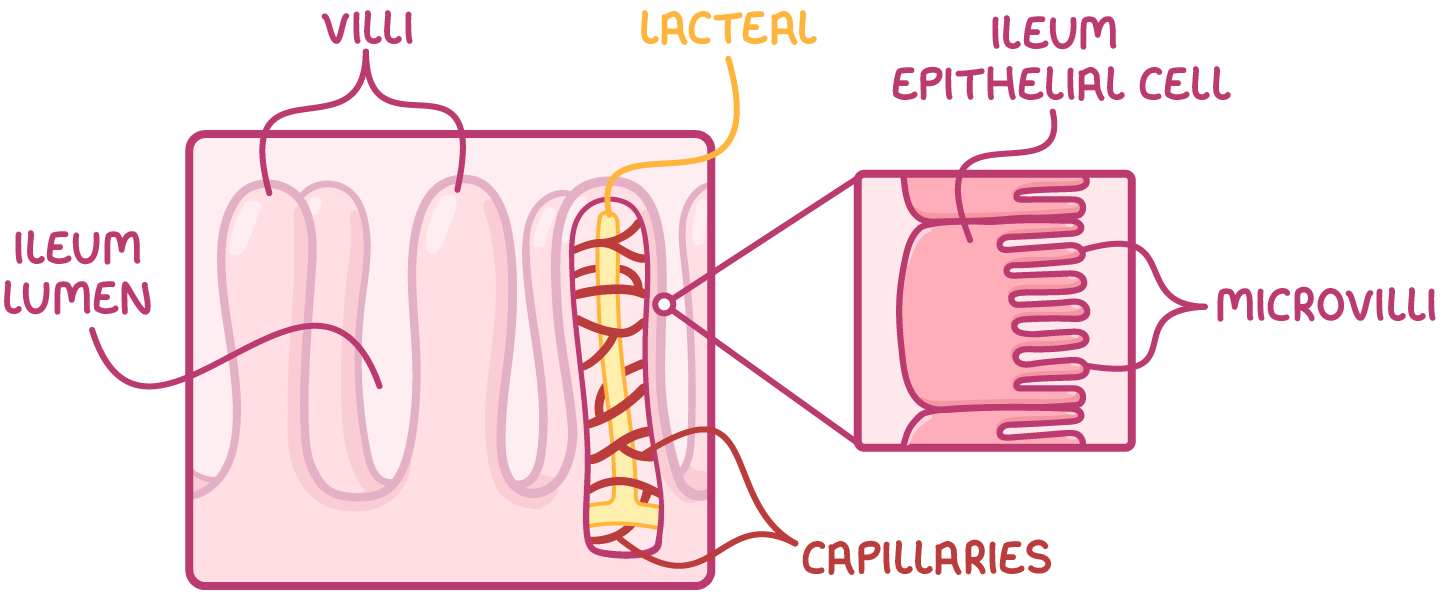Absorption of the Productions of Digestion
This lesson covers:
- The structure and adaptations of the ileum
- Absorption of amino acids and monosaccharides
- Absorption of triglycerides
Structure of the ileum
The ileum is the final section of the small intestine. It is adapted to absorb digested food molecules across the epithelial cells that form its lining so nutrients can enter the bloodstream.

Adaptations of the ileum for absorption:
- The walls are folded into finger-like villi to increase surface area.
- Epithelial cells have microvilli to further increase surface area.
- It has thin walls reduce diffusion distance.
- It has an extensive capillary network and a good blood supply to maintain steep diffusion gradients.
- Muscles in the ileum wall contract to mix content and bring new material into contact with villi.
Absorption of amino acids and monosaccharides
Amino acids are formed from the breakdown of proteins. Monosaccharides, like glucose, are formed from the breakdown of polysaccharides and disaccharides.
All monosaccharides and amino acids need to be absorbed, which could not be achieved by diffusion alone. Co-transport allows monosaccharides and amino acids to be transported into ileum epithelial cells against their concentration gradient.
How amino acids and monosaccharides are absorbed into the blood:
- Sodium ions are actively transported out of ileum epithelial cells.
- This sets up a sodium ion concentration gradient between the ileum lumen and the epithelial cells.
- Sodium ions are co-transported with amino acids or monosaccharides from the lumen into the epithelial cells.
- Amino acids and monosaccharides move by facilitated diffusion from epithelial cells into the blood.
This process is covered in more detail in an earlier lesson on co-transport, with glucose as an example of the molecule absorbed.
Absorption of triglycerides
Triglycerides and other lipids are broken down into monoglycerides (like glycerol) and fatty acids, and form micelles with bile salts.
How triglycerides are absorbed into the blood:
- Micelles are broken down to release fatty acids and monoglycerides.
- As they are both non-polar, fatty acids and monoglycerides can diffuse into the epithelial cells that line the ileum.
- Triglycerides reform inside the cells’ endoplasmic reticulum.
- Triglycerides are packaged into chylomicrons for transport.
- Chylomicrons are released from the epithelial cells by exocytosis into lacteals, which are lymphatic vessels in the villi.
- Chylomicrons are transported via lymph vessels in the lymphatic system to the blood.